[circuit type=review circuit_id=”20420171665″]
My trip to Madrid was a trip of many firsts. From my first-ever international business-class flight over the Atlantic Ocean to my first adult solo trip, I had no idea what to expect, what to do and what to see — especially in such a limited amount of time.
It was go-time as soon as the plane touched down at Adolfo Suarez Madrid Barajas Airport (MAD). I had five days and lots to experience. In the words of Lady Gaga, it was very much “bus, club, another club, another club, plane, next place.”
Before I dove head-first into the action and began to explore the city, I was eager to get to my hotel and drop off my bags.
After navigating my first time on Madrid’s metro system — which, thankfully, was not too complex compared to New York City’s — I found myself in the neighborhood of Arguelles. It’s a residential but lively area full of coffee shops and department stores where I learned a lot of Madrilenos call home. It would be my home for the next couple of days, too, as I stayed at Hotel Indigo Madrid Princesa.
From the adorable neighborhood to my experience navigating European adapters and lights (which required housekeeping to help me turn them on), here’s what staying at the Hotel Indigo Madrid Princesa was like.
Getting There
It’s quite easy to reach the hotel, thanks to Madrid’s robust and reliable transportation system. Sure, you could take an Uber or a taxi, which can be pretty affordable compared to other large cities, but if you want the true Madrileno experience, I highly suggest taking the metro. If you take an Uber or a Cab, you can expect to pay anywhere from 25 to 30 euros ($27 to $33) on average from the airport to the city center.
There’s a train station within the airport where you can pick up a Multi card; similar to a Metrocard in New York City, you can load and reload as much as you’d like onto the card.
Related: Your Points and Miles Guide to Madrid
I paid 28 euros ($30) for a five-day pass, which gave me unlimited access to the metro within the city. However, if you want to venture outside the city center, you must pay an additional fee. If taking the metro to and from the airport, you’ll also have to anticipate an additional airport fee of 2.5 euros ($2.75).
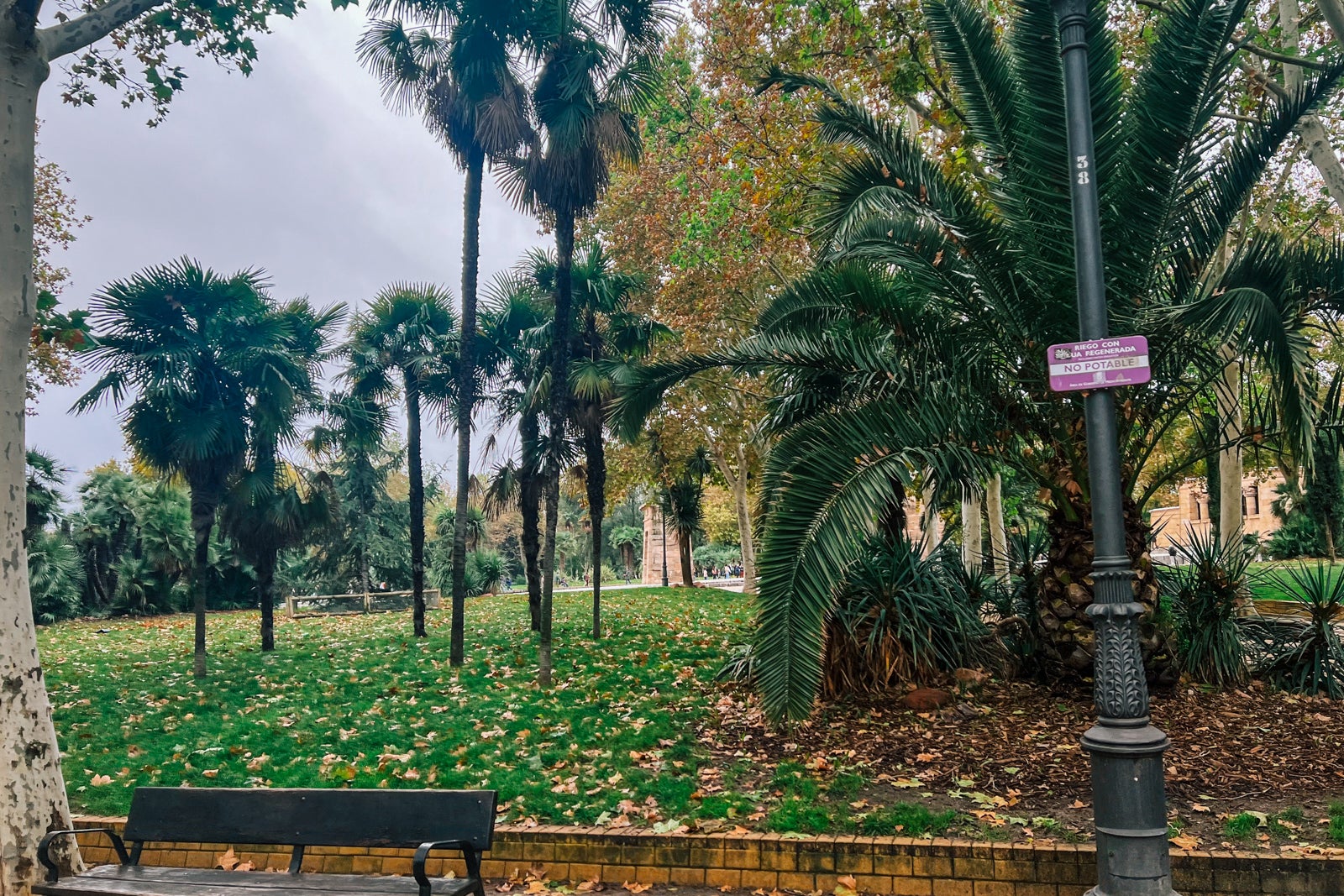


Throughout my time in Madrid, I found the metro highly reliable. In fact, I never took an Uber or a cab due to the navigable transportation network and the walkability of everything.
Booking the hotel Indigo Madrid Princesa
Since the Hotel Indigo chain is a part of the IHG family, you could use IHG One Rewards points to cover your stay. On average, you can expect to find redemptions anywhere between 20,000-30,000 IHG One Rewards Points per night, depending on the time of year you go, of course.
Typically, rates at this property fall somewhere below $200 per night; for a Full Bed Urban Standard room like mine, you could even find rates for as low as $102 per night, depending on the time of year you go.
For two nights, I paid a total of 332 euros (or about $365.23) using my Chase Sapphire Preferred card, which gives me 2 points per dollar spent on travel purchases, such as hotels for one.
I didn’t think the price was bad for a two-night stay. Had I stayed at trendier, closer-to-the-action hotels like the Thompson Madrid or the Hyatt Centric Gran Via Madrid, I would’ve had to fork over much more for a two-night stay.
Standout Features
- The location: Situated in the Arguelles neighborhood of Madrid, which is adjacent to popular neighborhoods like Sol or Callao, you’ll be right in the heart of the action. However, you can get a little breathing room when you need a respite from the busy streets.
- The sleek, modern design made this boutique hotel feel like an upscale property for a significantly lower cost.
- Every interaction I had with the hotel staff — from the kind front desk worker who surprised me with an early check-in to the friendly housekeeper who came to my aid when I couldn’t figure out the light switch — was positive. The people made my experience that much better.
Drawbacks
- The rooms are definitely on the smaller side, so it ‘s not the most remote-work-friendly. If you want to get some work done, you may want to utilize the business center downstairs or head to a nearby coffee shop.
- The hotel’s amenities were minimal; the small gym could easily get overcrowded if more than three or four people used the equipment at once.
- I found myself wishing the closet space was bigger and that there was more space for my belongings. For example, I could’ve hung more of my items if the closet rod was a bit longer.
Checking in
After a 40-minute train ride from the airport, I stepped outside the station with my little suitcase, and at that moment, it hit me that I had finally made it. “Toto, we’re not in New York anymore,” was the first thought that came to mind.
Luckily, I could spot the hotel from the metro stop, and after crossing the busy street, I found myself right in front of Hotel Indigo.
When I entered, I was greeted with a rich, citrusy bergamot scent, which I enjoyed. The lobby was modest in size and not crowded. In fact, it was very quiet, and the vibes were mellow.

It was noon when I arrived, so I was not expecting my room to be ready. I had prepared to kindly ask if the front desk would hold my bags while I started on some sightseeing. To my surprise, though, the helpful front-desk agent informed me that my room was ready and I could check in if I wished.
Eager to drop off my luggage and maybe wash the airplane scent off, I excitedly took my room keys and took the small elevator to the third floor.
For those of you new to Europe like me, the hotels do things a little differently than we do here in the U.S. For starters, the ground floor, which I would call the first floor, is, in fact, floor zero. The second floor is the first, and so forth. So in theory, back home, my room would be on the second floor.
The Room
When I first entered the room, I panicked. No, it wasn’t that the hotel had given me someone else’s room key, but rather I was faced with my first dose of culture shock.
The room light switch wasn’t working. After spending five minutes trying to figure out the light situation, I was about to head back downstairs when I came across a friendly housekeeper. I explained my situation and my ineptitude with European light switches since this was my first time on the continent (let alone traveling solo to a place I’d never been before).
Kindly, the housekeeper followed me into my room and turned on the light in two seconds. All it took was placing my hotel keycard in a slot next to the door and there was light, a fan, the whole works. Because of my limited travel experience, I was unfamiliar with this procedure, but it is much more common than I realized.

Once I figured out the lighting situation, I was able to enjoy the space. My room faced the rear of the building, so I didn’t necessarily get any jaw-dropping Madrid views. Unfortunately, that also meant it didn’t have much natural lighting.
Entering the medium-size room, I felt like I was back home in my East Village bedroom. It was small but comfortable and had enough space to lounge, relax and get some rest.
At just 172 square feet, it’s safe to say the room’s compact size encourages one to get out and explore the city rather than lounge around.




The closet, which was less of a full closet and more like a utility cart, had many hidden drawers and spaces for storing my belongings. Although I wished there was space to stow my suitcase there, it was functional enough to get the job done.
At first, I had a hard time locating the room’s safe, which is something I tend to utilize during my travels to keep all my important documents and belongings. After toying around with the open-concept closet, I pushed on what I thought was just a wooden accent piece; lo and behold, there was the safe.
The full-size bed was comfortable, but the pillows were incredible — I would’ve loved to take one home.

No matter how many times my travel-expert friends at TPG told me, I didn’t prepare for the bane of a U.S. traveler’s existence: the dreaded European power outlets. The walls did have USB ports, but since my phone and computer both use USB-C chargers, that didn’t help me. Consider this a friendly reminder not to forget a travel adapter.





The bathroom was sizable compared to my small New York City apartment bathroom. The shower, which had full-size bottles of citrus-scented Zenology products, was a highlight, thanks to the oh-so-sweet sensation of heavily pressurized water.
However, much like other parts of my trip, getting used to operating it was an adjustment. Unlike the showers I’ve used at home, this shower was interesting, to say the least. What looked like a stainless steel rod was, in fact, not. You had to twist the left side of the rod to turn it on, and the right side controlled the temperature.


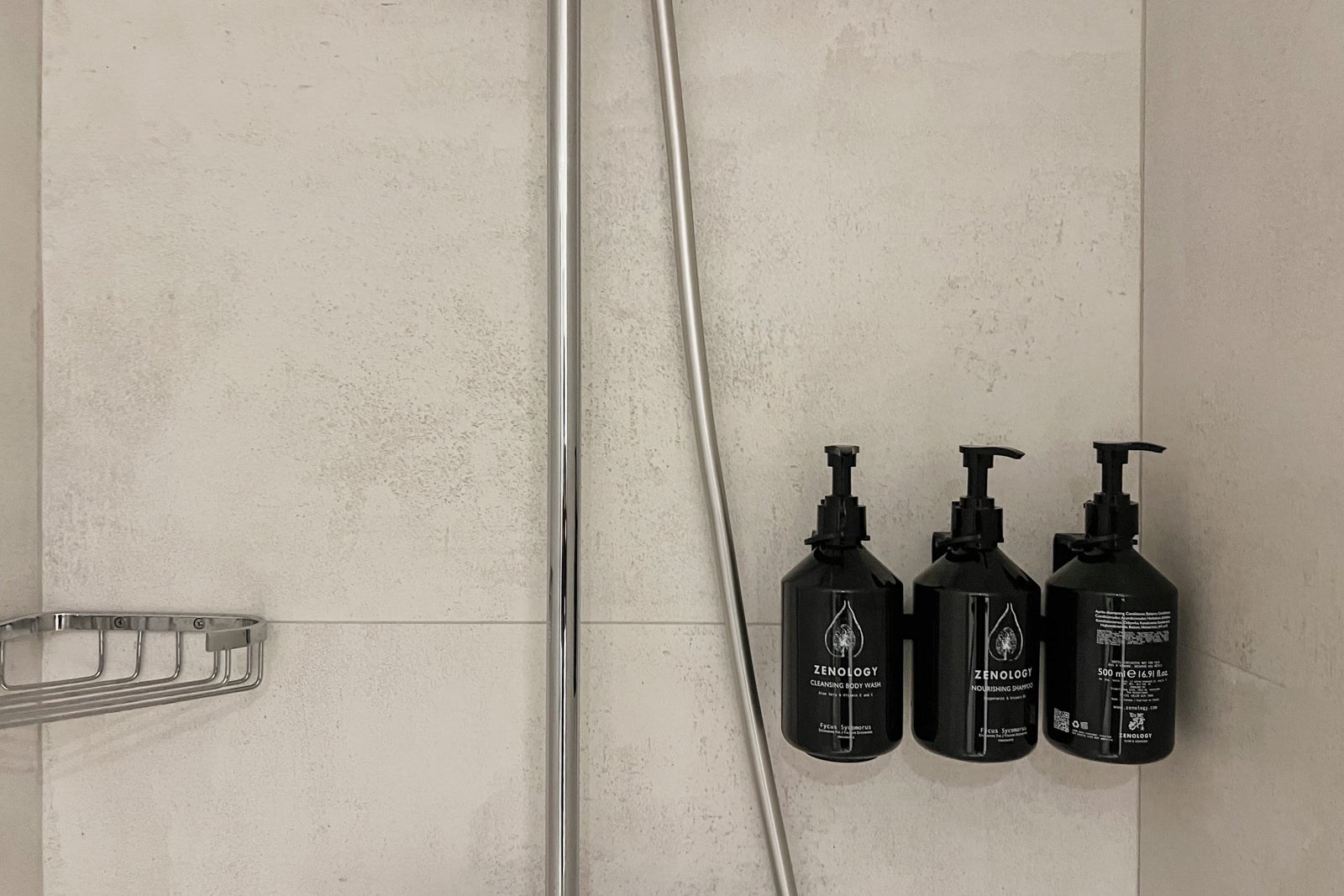
The Vibe
The hotel’s design was very much what I call cosmopolitan. From midcentury modern-inspired furnishings to the warm hues throughout, it was evident upon entering the hotel that this it is for city slickers — those who are always on the go and need a comfortable place to rest their head when the party is over.
The hotel offers something for everyone, from families to business travelers to even a couple of fellow solo travelers I had the opportunity to meet. In other words, the clientele was diverse.



I noticed that everything about the hotel seemed smaller than American standards. Everything was smaller than expected, from the elevators to the guest room. Looking back, though, I realize the beauty of it: Reduce the size of your space so you can go out and explore the vastness of Madrid.
Related: Why You Shouldn’t Miss Madrid on Your Next Trip to Spain
Food and Drink
The hotel’s restaurant, called Best, is adjacent to the lobby. Here, diners can enjoy traditional Spanish tapas; some classic comfort foods like hamburgers, steaks and quinoa bowls; and a wide variety of wines, beers and cocktails.
The jet lag from my seven-hour flight disrupted my hunger cues a bit. However, at 7:30 p.m., I still opted for a light snack (or merienda, as the Spanish say) and sat at the dimly lit bar. I ordered chips and guacamole ($10) and a glass of the popular Spanish drink tinto de verano ($8), which is essentially red wine mixed with lemon soda and topped with a lemon.



Since I got just an appetizer and a drink, my total was $18; for lunch and dinner on a typical day, I would recommend budgeting between $20 and $35 per meal.
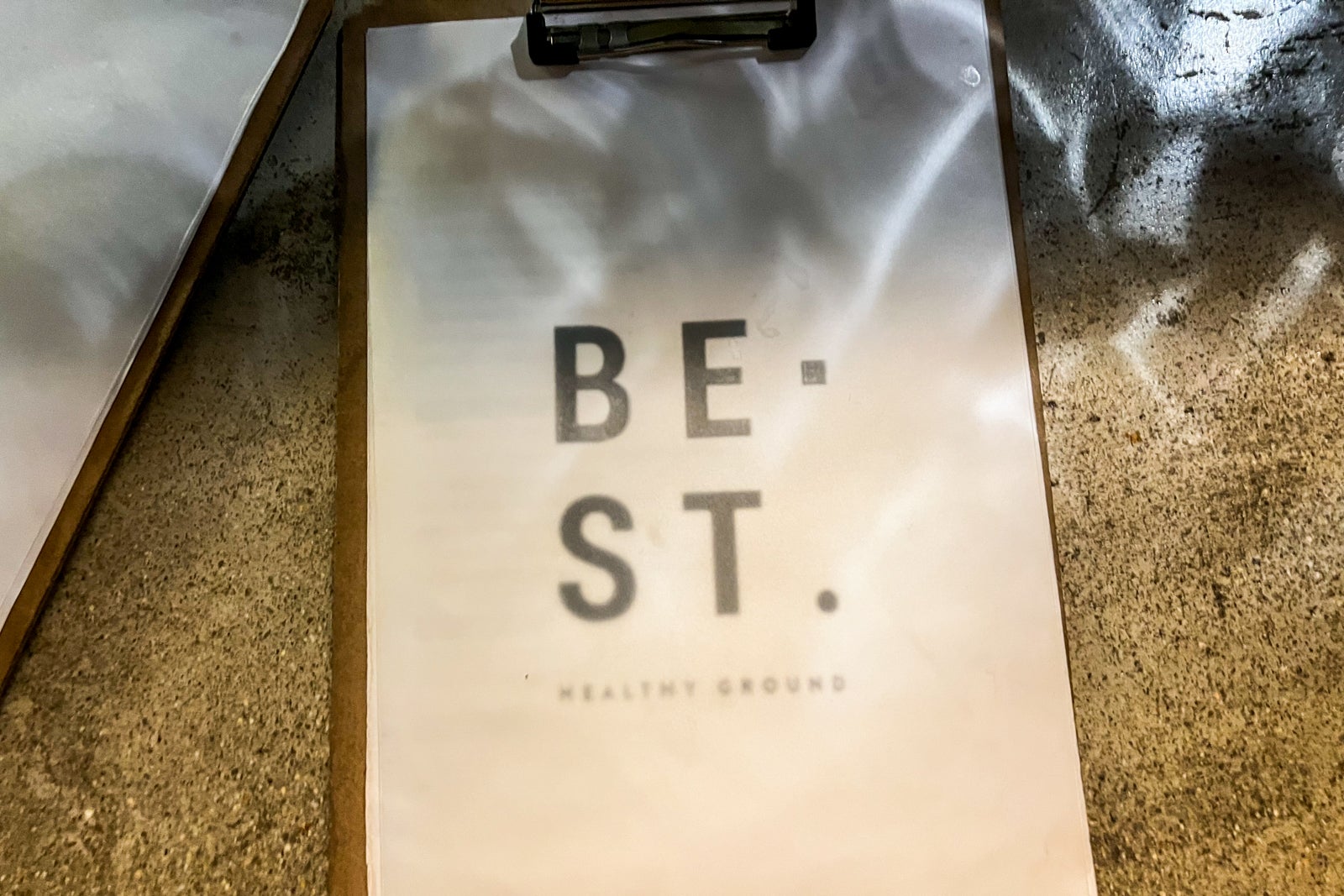




The hotel offers breakfast, and if you’re an IHG member who hit IHG Diamond Elite status, breakfast is included as a welcome amenity. However, as a points and miles newbie, I paid for my meal, which was $12 for the continental breakfast. If I had status, it would’ve been nice not to pay for breakfast and use that $12 on another souvenir or something of my choosing.



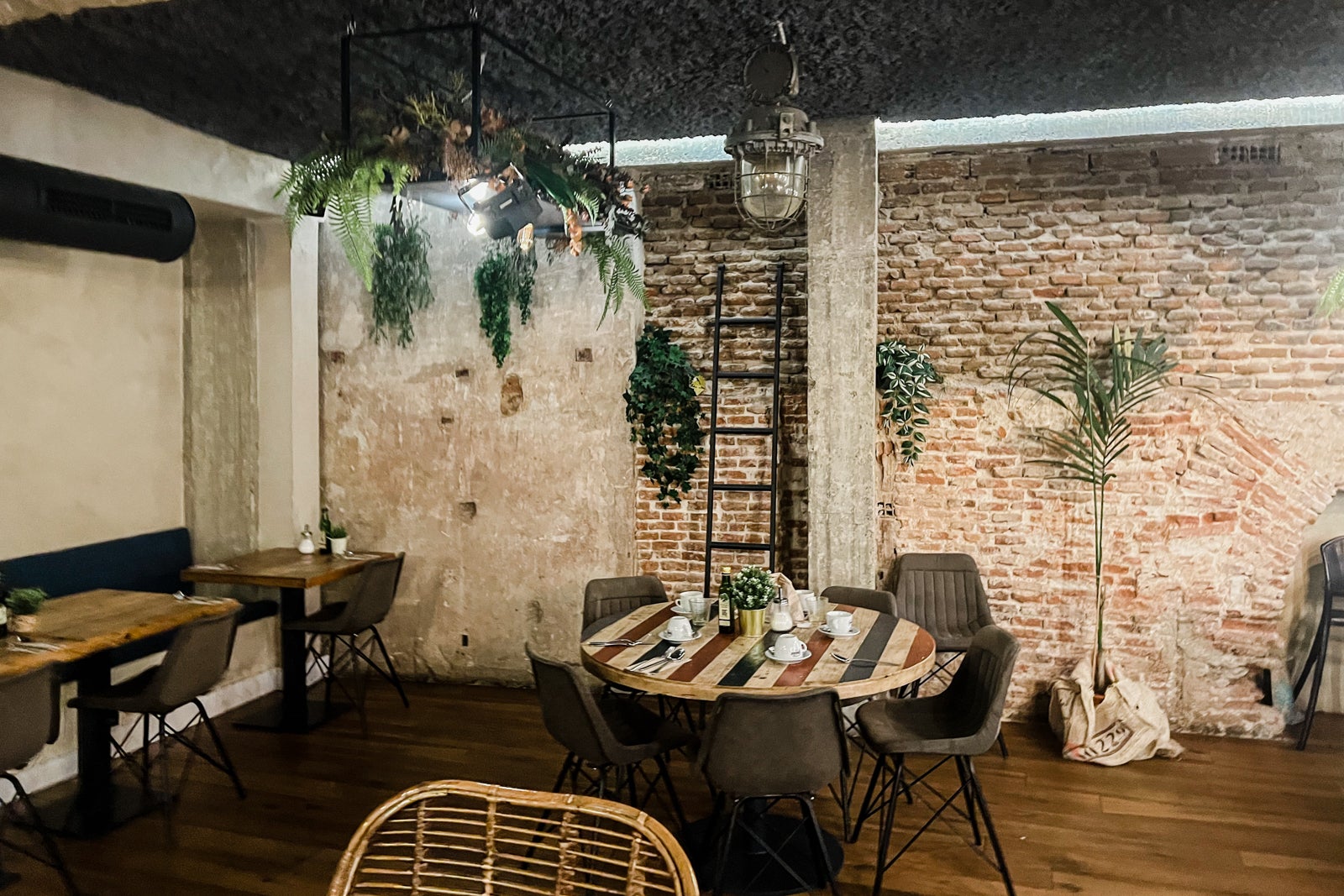
The spread is very traditional for breakfast, with offerings such as pastries, fruits, cold cuts, meats and a selection of orange or pineapple juice.
You also have the option to order a la carte if you’re looking for something heartier, like an omelet or a specialty item, though this would cost extra. I was looking for a quick bite before getting outside to explore.
To keep it light, I settled on a few different breakfast pastries as well as a bite of the Spanish omelet with a side of pineapple juice and a black coffee. Overall, the food was good, but I wouldn’t go as far as to say it was anything phenomenal. However, it did get the job done, and I was fueled up and ready to take on the day.



Amenities
On my second day, I checked out the gym, which is equipped with basic equipment like a treadmill, a set of weights and an elliptical machine. It’s just fine if you’re looking for a quick workout; if you’re looking for a full workout, I’d suggest signing up for a local fitness class nearby since the space is quite small and can get crowded easily.
It wasn’t until my last day that I realized there’s an outdoor courtyard right behind the hotel restaurant. It happened to be closed when I inquired about taking a look. However, the courtyard would’ve been a great place to sit, read and sip a nice glass of sangria in the warm weather.




If you want to get work done, the hotel has a small but decently equipped business center with a computer and a printer. Since my room did not come with a desk, I spent most of my time catching up on work in the business center, but I’d suggest going to a local coffee shop if you’re looking for more space to spread out.
Out and About
Since it’s in the Arguelles neighborhood of Madrid, the hotel is ideal for travelers who want to be close to the action while still having room to breathe.
One of the best parts of my trip was the neighborhood itself. While you’re still very much in Madrid, you’re not smack in the middle of the city. You get an authentic, local experience without feeling overwhelmed, and if you want to be in the center of it all, you’re only two train stops away.




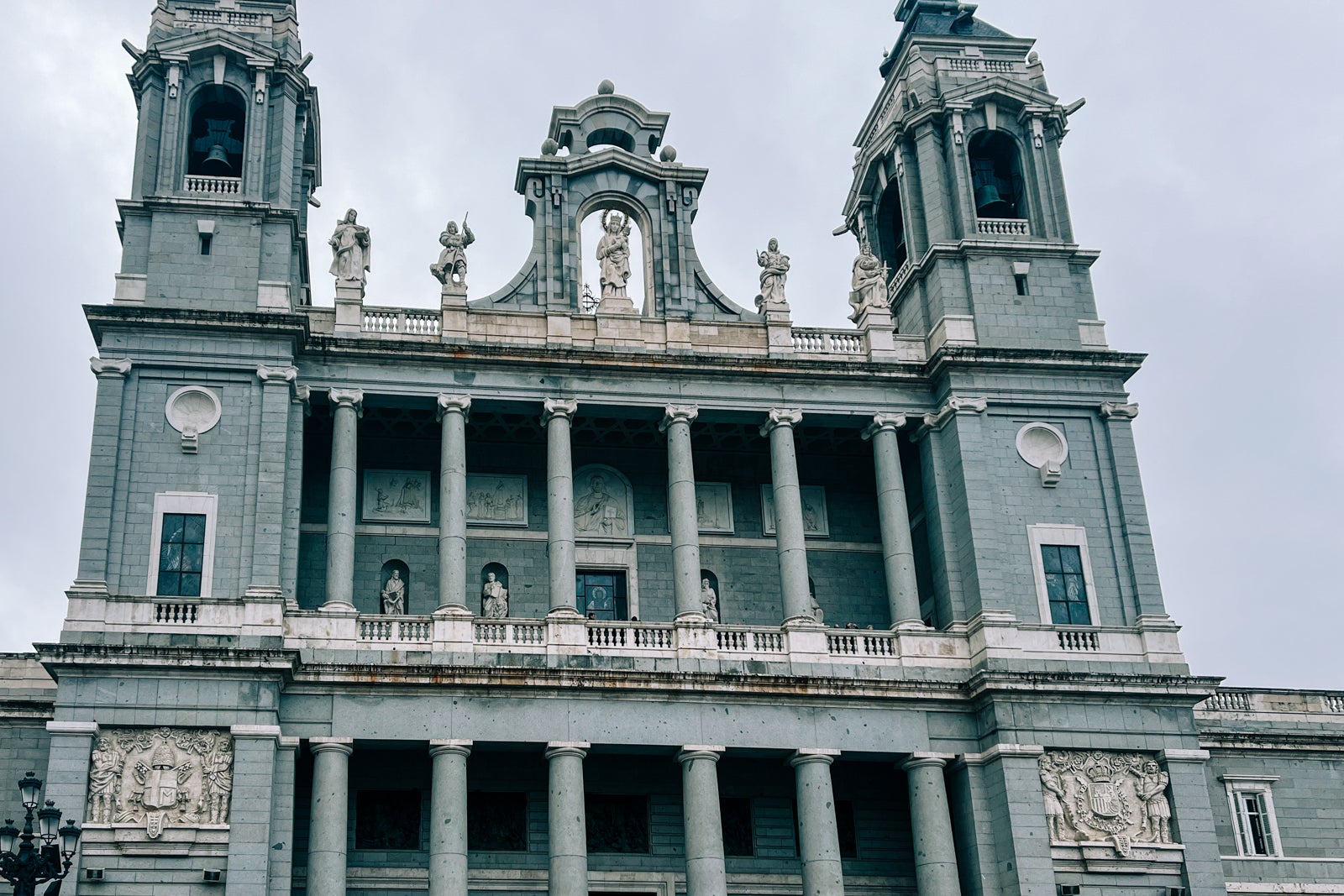
You’ll find the Metro station for Arguelles just two blocks from the hotel entrance, and it will take you just about anywhere. Or, if you’re like me and enjoy getting your steps in, everything in Madrid is still walkable from here.
Related: Long layover in Madrid? Here’s what you need to know
An easy 15-minute walk south, you’ll find yourself at the front door of the Royal Palace of Madrid and the Teatro Real. And just east of the hotel, you’re a 10-minute walk from Parque Del Oeste, which has lovely tree-lined paths and views of the outskirts of the city if you’re looking for a little nature.
Granted, if you’d rather stay more in the center of it all, you may want to consider the Sol or Callao neighborhoods; they are prime areas and offer the best when it comes to Madrid’s hotspots such as Gran Via, Plaza Mayor, or my personal favorite, Puerta Del Sol.
Accessibility
The hotel features accessible amenities such as wheelchair-friendly elevators, accessible restrooms in the lobby and two accessible rooms on the first floor.
The lobby has a wheelchair-friendly ramp leading to the hotel’s entrance and exit; the hotel restaurant also has its own separate exit and entrance with wheelchair-accessible ramps.
While the elevators were smaller than we may be used to here in the U.S., you can fit a wheelchair and another person if need be; however, keep in mind that maximum occupancy is three people.

The rooms themselves were decent sizes and, if need be, you could fit a wheelchair in a non-accessible room. Still, be aware that there’s not much space since the bed and closet take up a large portion of the room.
Checking out
On my last day, checking out was quick and easy. With an 11 a.m. checkout time, I could sleep in a bit and grab a quick bite before collecting my belongings and heading out to explore Madrid one final time.
The hotel is small and offers fewer amenities than you would expect from other hotels in the area, such as the Thompson Madrid. Hotel Indigo Madrid Princesa, while tiny, is still mighty in terms of its prime location and accessibility to center spots.
If you are looking for a hotel more in the center of it all, you could look into staying at Princesa’s sister hotel, Hotel Indigo Madrid — Gran Via. As the name suggests, it’s right on Gran Via, Madrid’s busy, popular commercial street. Its rates usually fall between $130 and $160 per night.
However, from the spectacular location, modestly sized yet comfortable accommodations and solid food options, I highly recommend this hotel for a solo traveler’s first trip to Spain. It’s a great spot if you’re looking to get out and explore the city for most of your stay.
Related reading:









